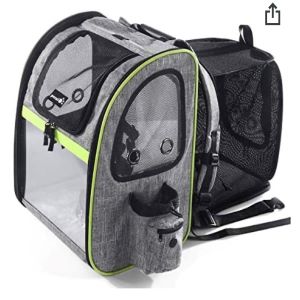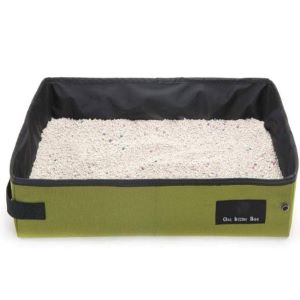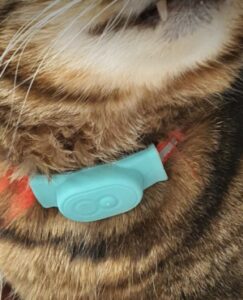When pondering a pet-friendly getaway, we often imagine dogs joyfully joining their owners on trips. However, many cat enthusiasts, especially the younger generation, embrace the idea of taking their feline friends on outdoor hiking escapades. Whether or not this suits your cat depends on various factors, such as their personality. Take my cat, Tabitha, for instance (before she lost her hearing to old age, and eyesight to hypertension). Every little noise terrifies her, making hiking an unthinkable prospect. Tabitha, like many cats, cherishes her sense of security. So, if you’re contemplating an outdoor adventure with your cat, what factors should you keep in mind?
Ensuring your cat’s happiness during an outdoor adventure involves considering its overall well-being, emotional state, personality, age and health. A confident cat is key for a positive experience. Taking a nervous or timid feline into the great outdoors could heighten stress and fear levels, leading to a potentially panicked situation. Before embarking on any outdoor escapade, assess your cat’s health, especially checking for joint problems. Keep in mind that a younger and more agile cat might be a better companion for such activities. As cats age, around 8 years and older, they may start to slow down and prefer the comforts of home. Senior cats, in particular, might enjoy more rest and warmth, so it’s essential to tailor the adventure to their individual needs.
Do you know your cat enough?
- Is my cat the right age to go hiking?
- Will hiking suit my cat’s personality?
- How to train a cat to wear a harness
- Finding the suitable travel carrier and backpack for your cat
- Have you thought about the extra weight you will carry on a hike?
- Is your cat healthy enough to hike?
- What about a cat’s toileting?
Before taking your cat on its inaugural outdoor adventure, it’s crucial to consider these factors. New environments, unfamiliar noises, and the potential presence of predators can have a significant emotional impact on your furry friend. Even with a harness and lead, fear might prompt your cat to run for it.
Don’t forget to update your cat’s microchip details, and consider adding a secondary contact. Pet Database provides this service for free, while others may charge over £20 or require a monthly subscription. It’s a small step that can make a big difference in keeping your cat safe and secure during outdoor escapades. Read more about Petdatabase and Defra-authorised microchip companies.
What should you consider before hiking with your cat:
Shopping list – cat hiking gear:
- Trixie Friend stainless steel bottle, bowl and metal carabiner
- Percute backpack with additional space
- Rabbitgoo cat harness
- Wolf of Wilderness travel food bag
- Hi Suyi foldable litter tray
- Aniwell Sunblock lasts up to 8 hours
- TabCat
- Tractive for cats
- Register your cat with a legitimate microchip company
1: What age can I take my cat hiking?
Your older cat may adapt to short hiking adventures, but some are stuck in their ways. A healthy younger cat will manage a two-mile walk, but an older cat may struggle. A senior will prefer to sleep more than go on epic hikes.
2: Weather suitability for a cat hiking
Temperature is a crucial consideration. In winter, any cat, regardless of age, can face risks when the temperature drops below 45 degrees Fahrenheit (7.22 degrees Celsius), leading to hypothermia or frostbite.
On the flip side, hot weather poses its dangers, primarily heatstroke. It’s wise to familiarise yourself with pet first aid and carry a kit. YouTube, often hosting vet channels, can be a valuable resource for learning how to ensure your cat’s well-being during outdoor adventures.
3: Do cats like going on hikes?
Not every cat is cut out for the great outdoors, and just like people, cats have unique personalities. Take a good look at your cat’s behaviour at home – my feline crew has a mix of traits, including irritability, nerves, shyness, confidence, and laid-back attitudes. My eldest, Dixie, is a confident cat who might have enjoyed outdoor hikes, but her over-confident nature posed a concern.
On the other hand, my other cat wouldn’t have handled new environments, strange sounds, sudden loud noises, and encounters with dogs very well. They’re the type that values their comfort zones.
A young and adventurous kitty might be a suitable candidate for hiking. Starting training at eight weeks, introducing a harness and a safety collar with an ID tag can help your kitten get used to the idea. However, never let a kitten outside alone initially, as they may not understand the potential dangers. Be patient and carry them at first to help them acclimate to unfamiliar sounds and scents. Training a cat takes time – it could be weeks or even months, and success isn’t guaranteed. It all depends on your cat.
For older cats, it’s worth a try to see if they embrace new territories, tolerate a harness, use a litter tray during long journeys, stay calm in a travel carrier, and perhaps even enjoy a nap in a carrier backpack as you venture on your hike. Testing the waters with your older cat might surprise you with their adaptability to new experiences. However, older cats can develop deafness, poor eyesight and memory problems. You can read more of my articles about these age-related issues in my cat and kitten category.
4: When can you start harness & leash training your cat?
We’ve previously recommended starting harness training at a kitten’s age. In the video following this text, you’ll witness two cat owners trying to harness-train their older cats for a walk, accompanied by insights from a behaviourist
He says:
- A cat will freeze when you put a harness on, so practise at home for as long as it takes
- Work with your cat if you want your kitty to do something, but you must trick them!
Watch the Video: People Try Walking Their Cats
The following are the steps to introduce your older cat to a harness:
- Introduce the harness slowly and quietly. Lay the harness beside your cat so it can sniff it and get used to having it near
- Never force your cat into wearing a harness too soon. You will face constant resistance
- Remember, the older your cat is, the less tolerate it will be of changes or being made to do something it does not want to do
- Lay the harness across your cat’s body for a few seconds, then remove
- Clip and unclip the harness near your cat so it grows accustomed to the sound
- Eventually, try slipping your cat’s leg through the leg section on the harness
- When you can dress your cat fully in the harness, try before dinner so your cat’s attention is diverted by food
- Reward with treats
If obvious your cat is uncomfortable, please stop to avoid stress, anxiety and overgrooming. It may be the wrong activity for your older cat.
The recommended harness is by Rabbitgoo Escape-proof on Amazon. Its design features breathable mesh and reflective strips and comes with a leash.
5: Hiking with a cat in a backpack

If your older cat associates a carrier with trips to the vet, it’s a good idea to get a different one linked to positive experiences!
For holiday travels, opt for a sturdy carrier that can be securely fastened with a seat belt in the car. This is crucial for safety in case of a traffic collision.
Consider a carrier backpack for hiking adventures. As your cat may tire and need breaks, the backpack, worn across your back, makes transportation easier than carrying it in your arms. The Percute backpack even has a pop-up back for extra space.
Training your cat to use the carrier is essential. Use treats or carry your cat before dinner, leading them to the spot where their food awaits.
If your cat suffers from travel sickness or anxiety in the carrier, conduct positive tests. My cat Molly would get sick minutes into a journey. Even with positive results, pack wipes, handroll, and pet-safe disinfectant for cleaning the litter tray, carrier, or car. I use the Safe 4 brand, also used by the RSPCA West Norfolk in their cattery.
6: Terrain & a cat’s weight for hiking
An adult cat typically weighs between 3.5 and 4 kilograms, so being physically fit is important when hiking with a backpack containing your cat and other essentials like water and food. Remember, your cat needs hydration and nourishment too. The hiking terrain might be uneven, and it could be a mile or more before your cat is ready to walk again.
Items you’ll need for your cat’s hike
- Travel food bag (avoid using a plastic bag because dry food will sweat and rot)
- Travel water bottle and bowl (investing in a better quality bottle to avoid leakage)
- Collapsible bowl if the travel water bottle does not include a bowl. (buy from Poundstretcher for £1.99)
- Sun lotion for pets (to prevent sunburn and cancer in white cats, thin coat, nose, ears)
Related articles:
7: Health-safety for your hiking cat
If your cat has health issues like heart problems, sore joints, arthritis, or dementia, it’s best to consult your vet before considering hiking adventures. Your vet can provide valuable health-related advice. I’ve written articles from experience too.
Additionally, it’s crucial to research and know the location of the nearest veterinary practice in case of emergencies. Mobile signals may be unreliable in certain areas, like the North York Moors, so it’s wise to be prepared. Pitchup Outdoors has a vast range of information regarding products for camping and hiking, and 7 Tips: How to get a mobile signal in poor reception areas. Another important article is No more dead phones: Guide to portable power banks.
To prevent waterborne diseases, avoid letting your cat drink from rivers or streams. Stick to freshwater sources for their safety.
Ensure your cat is up-to-date on vaccinations, including worming and tick treatment. Opt for preventative medicine from your vet, as it’s often more reliable than cheaper alternatives in supermarkets. For example, Tabitha uses Bravecto flea treatment, lasting three months, and Stronghold for flea, worm, and tick protection. Drontal and Milbemax are recommended for ticks and worms. If your cat is part of a Pet Health Care Club, or a scheme with an independent veterinary practice, these treatments may be included in the scheme.
8: Litter trays for hiking

When embarking on long journeys with your cat, having a litter tray in the car for their restroom needs during rest stops is essential. Consider using the Hi Suyi, a foldable and waterproof litter tray for cat-friendly accommodations like hotels, camping, car journeys or self-catering options. While optional, you can line it with litter liners or puppy pads, although it’s easily cleanable. Just empty the contents into a disposable bag and use suitable wipes to clean the tray.
Allow your cat to toilet naturally outdoors but pick up the faeces using poo bags.
9: Microchip and cat trackers for hiking

TabCat uses radio frequency to send and receive information between a credit car-sized handset and a 5g homing tag. Compared to a GPS Tractive’s cat tracker weighing 25g, it is much lighter for a cat to wear.
The TabCat handset is directional and locates a cat between 600 feet (182m) to 1″ (2.5cm). It can be purchased from TabCat’s Amazon store. Unfortunately, the device doesn’t operate with an app, giving location history or real-time/ You can read my article for more information about TabCat.
If you prefer an app, the Tractive may be the better option and you can read more in my article.
No matter which device you opt for, none can guarantee 100% accuracy. The challenge with GPS Tractive lies in its limitations in densely wooded areas, where a clear line from the tracker to the sky is necessary. Switching to Bluetooth is a workaround in such situations, but it requires your mobile to be close to the tracker. As a backup measure, never letting your cat off its lead is advisable. At night, ensure your kitty is securely in its carrier, or if you’ve set up camp, consider using a crate for extra space.
Always ensure your cat’s microchip details are up to date. Tabitha is with PetDatabase, a Defra-approved microchip company. I use this service because I can update her details online for free and they do not charge a monthly fee.
Key takeaways:
- Not every cat is suitable for hiking
- Planning and expenditure is necessary to provide safety and comfort
- Understand that a missing cat can become prey for wildlife
- Pet-friendly accommodation or a crate for camping may be necessary for nights
- Harness, crate, and backpack training months before a trip is vital
- Never take a cat hiking without training
- Begin hiking for an hour or two, then come home

